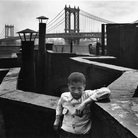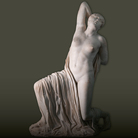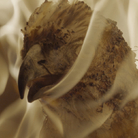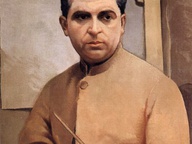Marcia Hafif. Roma 1961-1969

Dal 30 May 2024 al 25 August 2024
Roma
Luogo: MACRO - Museo di Arte Contemporanea
Indirizzo: Via Nizza 138
Orari: Martedì – venerdì: 12.00 – 19.00 Sabato e domenica: 10.00 – 19.00 Lunedì chiuso
Enti promotori:
- Azienda Speciale Palaexpo
- Assessorato alla Cultura di Roma Capitale
Costo del biglietto: Intero: 6 euro / Riduzioni e tariffe speciali: 4 euro Ingresso gratuito per i bambini fino a 6 anni Gratuito tutti i martedì e per i possessori della Octopus Membership Il biglietto è valido per tutte le mostre in corso
Telefono per informazioni: +39 06 696271
E-Mail info: info@museomacro.it
Sito ufficiale: http://www.museomacro.it
Hafif giunge in Italia nel 1961 tramite un viaggio di ricerca a Firenze, per poi arrivare a Roma dove rimane fino al 1969. Grazie a un approccio dichiaratamente naïve sia nei confronti della città che della sua tradizione storico artistica, Hafif riesce a emanciparsi da alcune delle influenze e costrizioni che aveva avvertito in California, proseguendo con rinnovata libertà la sua ricerca pittorica astratta – o meglio “concreta”, termine con cui era solita riferirsi al proprio lavoro. Si stabilisce in Via del Babuino e frequenta il Caffè Rosati, integrandosi in poco tempo nella comunità artistica e stringendo rapporti di amicizia con Pietro Consagra, Tano Festa, Franco Angeli, Francesco Lo Savio, Toti Scialoja e soprattutto con Carla Accardi. Nel 1964 inaugura la sua prima personale alla Galleria La Salita di Gian Tomaso Liverani.
«Ogni giorno visitavo le chiese o semplicemente camminavo per la città, cogliendo immagini da ogni parte» afferma Hafif che rimane affascinata dalle cromìe e dalle forme della segnaletica stradale e dei cartelloni pubblicitari, oltre che dai marmi intarsiati delle chiese che richiamavano alcune delle geometrie già apparse nelle sue pitture californiane. Acquista colori a smalto e pitture murali nelle ferramenta, apprezzando una diversa sensibilità italiana nella formulazione dei colori a uso industriale. Ma è solo nel 1964, con la commercializzazione della vernice acrilica, che Hafif trova un medium ideale che la accompagnerà in maniera ricorrente nella sua produzione. Tutti questi elementi entrano a far parte del vocabolario visivo della stagione romana dell’artista.
La mostra presenta opere su tela e su vinile, realizzate tra il 1964 e il 1968 e caratterizzate da uno stile che Hafif ha definito come “pop-minimale”, nelle quali i pattern geometrici lasciano progressivamente spazio alle hill shapes, le forme collinari tra le più rappresentative del periodo romano dell’artista. A completare il percorso espositivo quattro serie di fotografie in bianco e nero – tra cui Roman Shopkeeper (1968), Italian Party (1968) e Roman Windows (1969) esposte per la prima volta – che offrono uno sguardo inedito sulla ricerca fotografica di Hafif, iniziata a Roma grazie all’aiuto dell’amico Tony Vaccaro.
Marcia Woods nasce nel 1929 a Pomona, California. Dopo essersi laureata al Pomona College nel 1951 e aver sposato Herbert Hafif, nel 1961 progetta un viaggio a Firenze. Si stabilisce però a Roma, dove rimane per quasi otto anni. Torna in California nel 1969 e abbandona per un certo periodo la pittura, dedicandosi alla sperimentazione con il cinema, la fotografia e l'installazione sonora, completando un master presso l'Università della California a Irvine. Nel 1971 si trasferisce a New York e si riavvicina alla pittura. Nel corso degli anni Ottanta e Novanta continua a dipingere, stabilendo rapporti con gallerie in Europa, prima a Monaco poi a Düsseldorf e infine a Vienna, Londra, Parigi. Il lavoro di Hafif è stato esposto in numerose istituzioni museali, tra cui: MoMA PS1, New York (1990), Haus für Konstruktive und Konkrete Kunst, Zurigo (1995), FRAC Bourgogne, Digione (2000), MAMCO Genève, Ginevra (2001), Laguna Art Museum, Laguna Beach (2015), Kunsthaus Baselland, Basilea (2017), Kunstmuseum St. Gallen, San Gallo (2017), Lenbachhaus, Monaco (2018), Pomona College Museum, Claremont (2018), e MAMCO Genève, Ginevra (2019). Hafif muore nel 2018 a Laguna Beach, California.
SCARICA IL COMUNICATO IN PDF

-
 Dal 2 December 2025 al 19 February 2026
Milano | Centro Culturale di Milano
Dal 2 December 2025 al 19 February 2026
Milano | Centro Culturale di Milano
Walter Rosenblum. Il mondo e la tenerezza
-
 Dal 29 November 2025 al 12 April 2026
Roma | Musei Capitolini
Dal 29 November 2025 al 12 April 2026
Roma | Musei Capitolini
La Grecia a Roma
-
 Dal 30 November 2025 al 12 April 2026
Gallarate | Museo MA*GA
Dal 30 November 2025 al 12 April 2026
Gallarate | Museo MA*GA
Kandinsky e l’Italia
-
 Dal 22 November 2025 al 3 May 2026
Torino | Sale Chiablese dei Musei Reali
Dal 22 November 2025 al 3 May 2026
Torino | Sale Chiablese dei Musei Reali
Orazio Gentileschi. Un pittore in viaggio
-
 Dal 20 November 2025 al 25 January 2026
Firenze | Palazzo Strozzi
Dal 20 November 2025 al 25 January 2026
Firenze | Palazzo Strozzi
Andro Eradze. Bones of Tomorrow
-
 Dal 21 November 2025 al 28 March 2026
Cuneo | Complesso Monumentale di San Francesco
Dal 21 November 2025 al 28 March 2026
Cuneo | Complesso Monumentale di San Francesco
La Galleria Borghese. Da Raffaello a Bernini. Storia di una collezione


